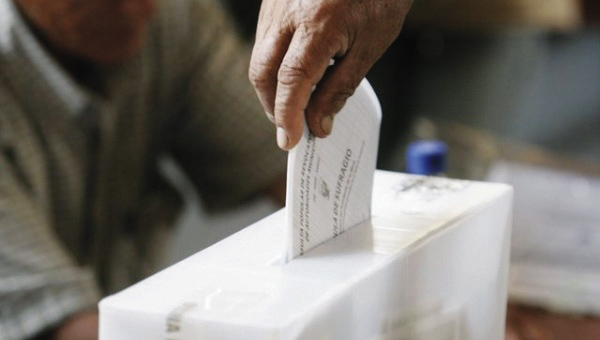Our regular roundup of COVID-19 cases
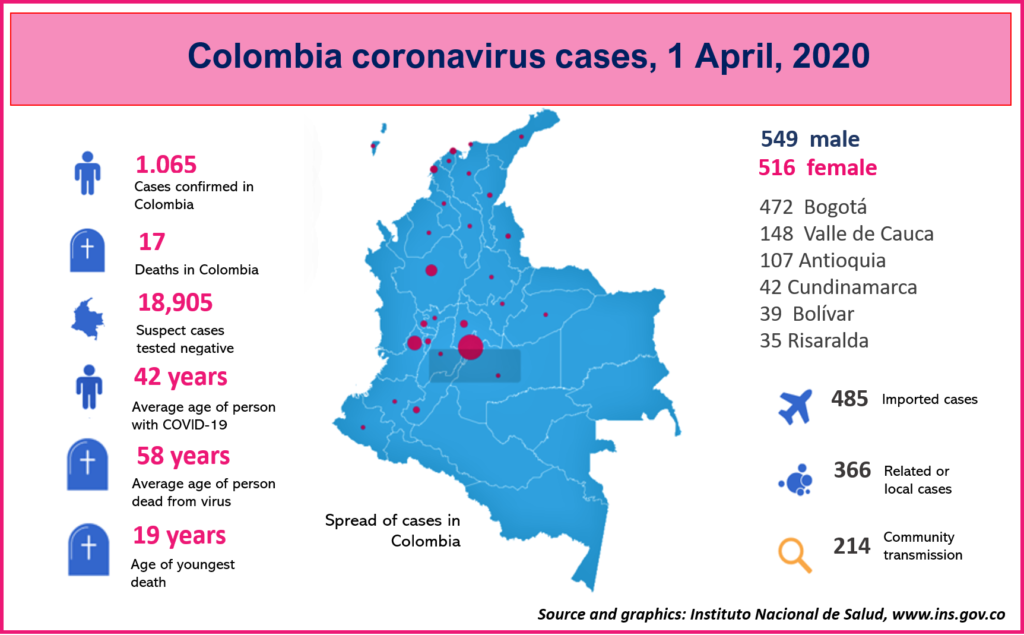
Key points on coronavirus in Colombia:
- 1,065 cases to date, 17 deaths
- 19-year-old dies in Cali
- Community spread means more cases
- Colombia enters ‘mitigation’ phase of outbreak
Coronavirus is now widely circulating in Colombia with a significant rise in community cases that cannot be linked back to the original imported infections from Europe.
Read all our coronavirus reports here
The so-called ‘mitigation phase’, as announced by the health minister Fernando Ruiz, has been triggered by data showing that 20% of confirmed COVID-19 cases have popped up in the population among people that so far have no known connection to those flying in sick from Europe last month. In Bogotá that figure is 30%.
This new stage of the outbreak comes as 1,065 cases were detected in Colombia and 17 deaths reported.
Squash the sombrero
Anyone following the coronavirus crisis has acquired an interest in epidemiological curves, and particularly making them go down again – or “squashing the sombrero” as a U.K. politician poetically put it.
Meanwhile in Colombia – a country with cool hats – the virus has got loose, even though the health minister says that Colombia’s quarantine measures are “showing effects by flattening the outbreak curve” and giving time for health services to better attend sick people.
Since the first coronavirus case in Colombia, 15% have been hospitalised, and a third of these (5.5% of all cases) have required life-saving treatment in intensive care.
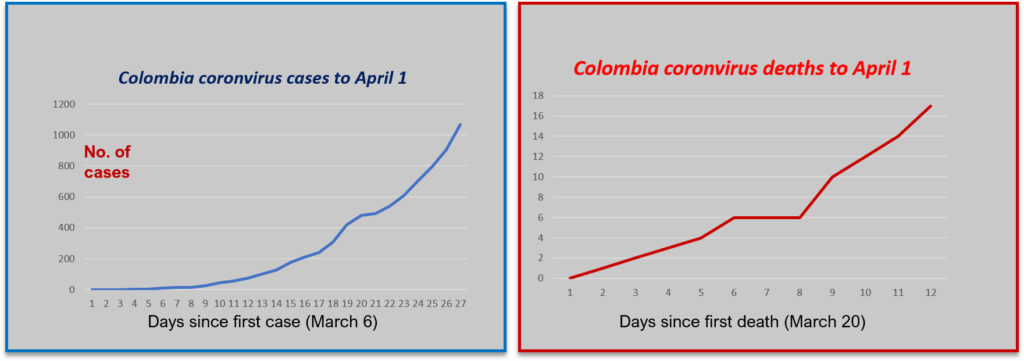
Stats also show that:
- The average age of confirmed cases is 42 years
- The average age of hospitalised cases is 55 years
- The average age of persons who have died is 60 years.
The youngest death so far was reported today, a 19-year-old female in Cali who had pre-existing health problems according to authorities.
Transmission break-down
Should we be worried by this new phase? According to health experts this is a normal and expected part of any outbreak, which can be broken down into the following stages:
Stage 1 – imported cases. These cases are the people who have arrived infected from foreign countries such as Italy and Spain. With the airline ban these cases stopped arriving in Colombia in late March.
Stage 2 – local transmission. Virus spread from imported cases, usually family and friends, also known as related cases. This explains the higher number of cases on the north of Bogotá, for example, where families of more fly-in infected are living.
Stage 3 – community transmission. Despite efforts to trace how people got infected, there are no clear links to either imported or related cases. These cases could have accidentally been infected by local and imported cases (form example in a public place) or via another infected person who shows no symptoms and remains untested for coronavirus. We would expect a more even spread of community cases around the city.
Stage 4 – epidemic. The virus spreading widely. During this stage there is little chance to trace the virus.
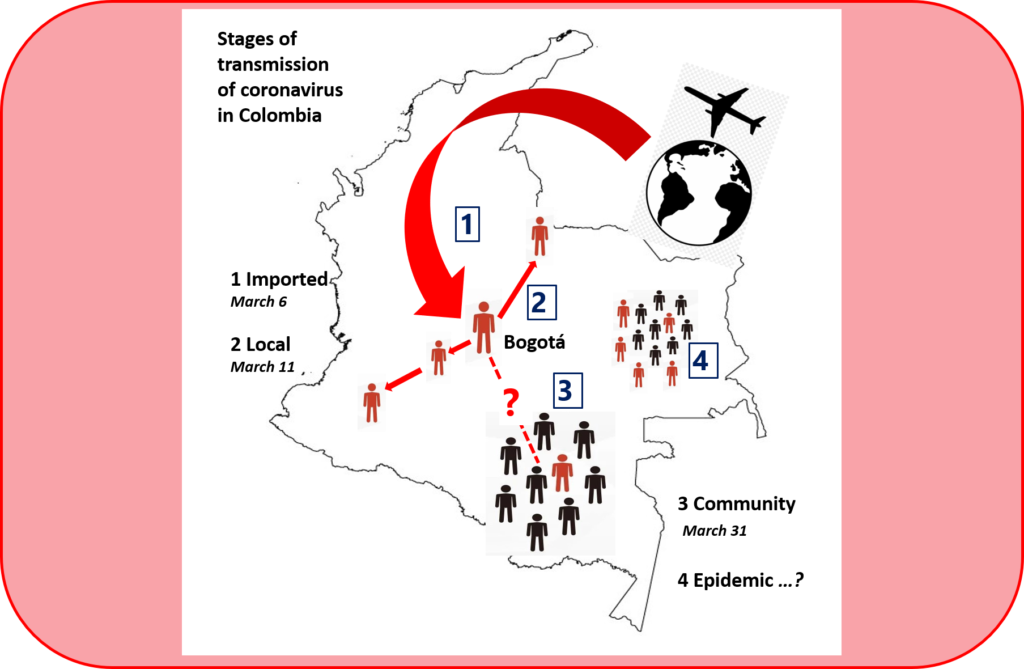
Seven of the previous eight deaths in Colombia (since March 28) appear to be community transmission cases with no link to travellers arriving from overseas. This suggests that community transmission has been going on for some time.
The silent spreaders
According to latest findings by health experts, community transmission of coronavirus is hard to contain because the virus has some very unusual tricks: For example, people who get sick can take up to two weeks to develop symptoms, and some people showing no symptoms at all can be highly contagious.
In fact, from Chinese studies it appears up to one in four infected people is walking around spreading the virus without even a sniffle.
And in a study of a choir group in Seattle, U.S., one singing practice of 60 choristers – even using alcohol rub on their hands and everyone looking healthy – caused 45 cases and two deaths.
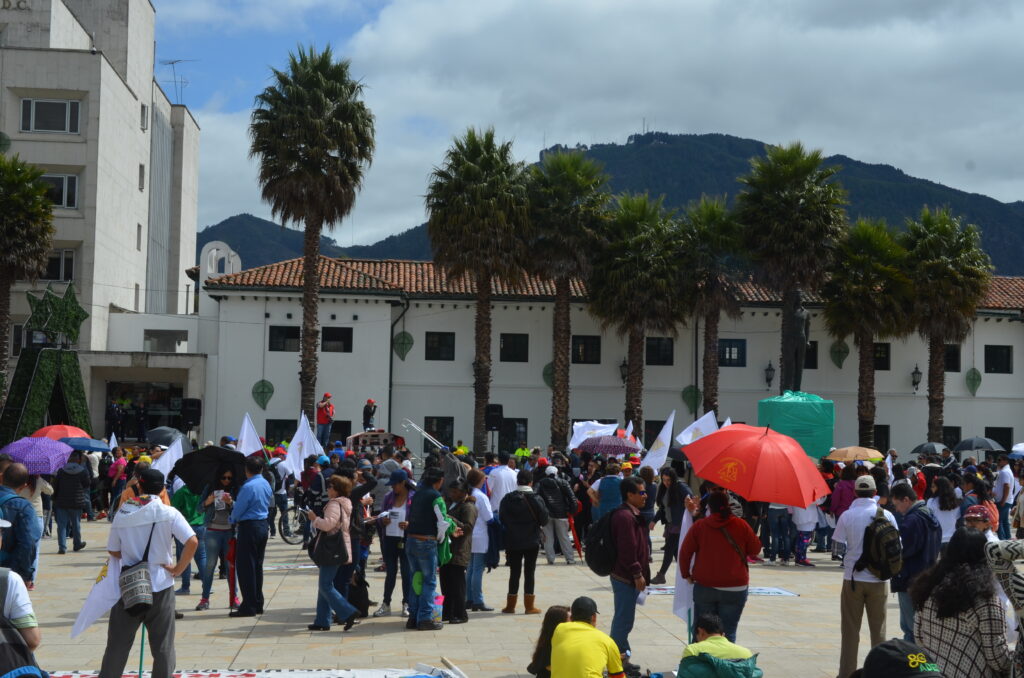
This silent spreading makes COVID-19 hard to control by the usual and obvious means. This is because as an asymptomatic spreader:
- You don’t stay at home because you are not feeling sick.
- And you are unlikely to be selected for testing since you don’t fit the criteria.
- Plus, you won’t show up on any hi-tech thermometers used for rapid screening, i.e. at transport hubs.
This also means that testing data – usually focused on people with symptoms or those closely related to a confirmed case – is likely to be a massive underestimate. But by how much?
Detecting the undetected COVID-19
Scientists are trying to work out the real numbers of COVID-19 cases in different countries, a tricky task given the wide variety of testing protocols in play. But it is likely that the more advanced the outbreak, the greater the gap between confirmed and undetected cases.
With community transmission now happening in Colombia, health experts are estimating that at least four times as many people are infected with COVID-19 – and showing mild or no symptoms – than have been tested, a figure of around 4,000.
In Europe, where the outbreak is more advanced, an estimate study by bio-mathematicians at Imperial College London suggests that hard-hit countries like Spain and Italy could have at least 50 times more cases than have been officially recorded. This means some places have more than 10% of the population infected.
This sounds a lot, but is still way short of the amount of 70% needed to provide effective natural resistance in the population – the so-called herd immunity.
As we mentioned in the last update, some of these questions can be answered by cheaper rapid testing that detects antibodies, but globally there have been quality problems – too many false results – and fake news related to duff products. But many countries are now homing in on cheap mass testing, which within weeks will give hard data to these theories.
How are we doing with the coronavirus?
There is no coronavirus country league table and there are too many varying factors between places to make easy comparisons. But by looking at a simple measure – the number of deaths reported in various countries on the date that is 12 days after the first death – and adjusting it for country populations, then Colombia appears to be doing OK.
| Total deaths 12 days after 1st death | Population (millions) | Deaths/10m people | |
| US | 41 | 329 | 1.25 |
| Hong Kong | 2 | 8 | 2.50 |
| Colombia | 17 | 50 | 3.40 |
| South Korea | 28 | 51 | 5.49 |
| Peru | 30 | 33 | 9.09 |
| Germany | 84 | 84 | 10.00 |
| UK | 71 | 68 | 10.44 |
| Ireland | 6 | 5 | 12.00 |
| Ecuador | 29 | 17 | 17.06 |
| Italy | 107 | 61 | 17.54 |
| Sweden | 27 | 10 | 27.00 |
Sweden has the highest number of deaths per population, something to be expected in a country not currently enforcing any quarantine measures.
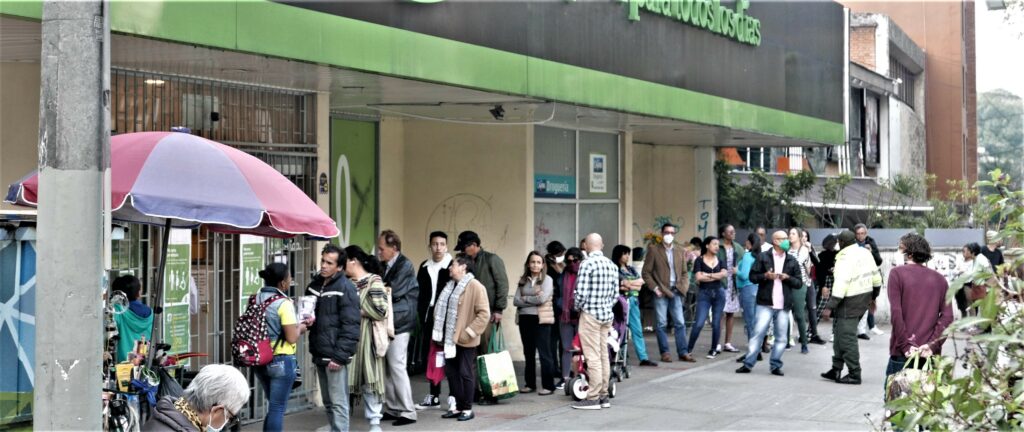
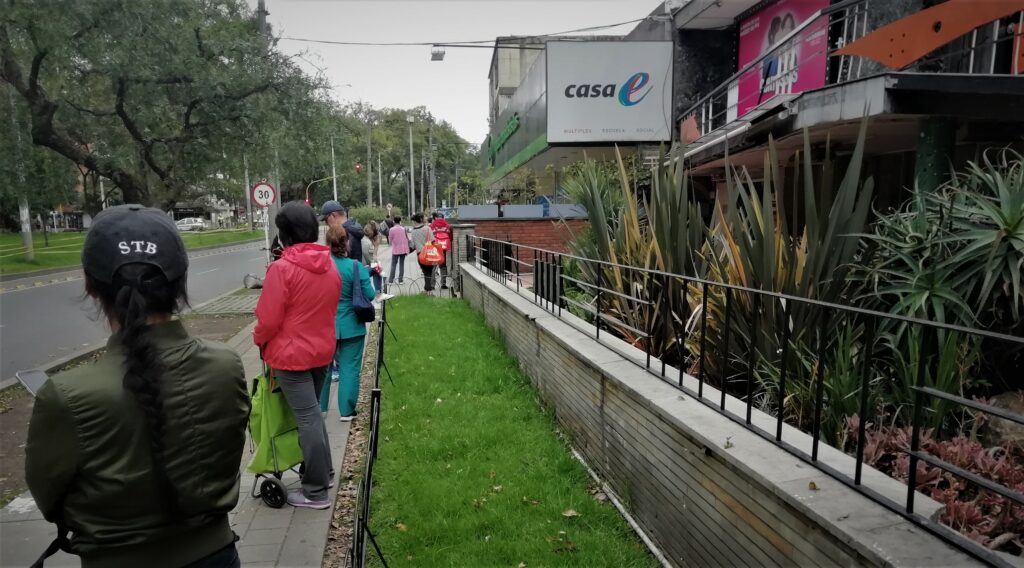
Colombia’s achievements so far come from successful social distancing, which is the new normal for some parts of Bogotá, as the above photos show. Mayor Claudia López reckons that “75 per cent” of rolos are complying with the national quarantine.
Small businesses suffer from coronavirus lockdown
But progress comes at a high price: locking down a population already struggling economically. And now with community spread – and large number of undetected cases – health experts are again emphasising the need for “control and containment of the general population,” as the health minister Fernando Ruiz put it this week.
So far, he has not made a clear statement on what might happen after the current quarantine ends on April 13. But Ruiz did say that “we will continue taking measures to keep the curve as flat as possible”.
How will this play out with a population desperate to get out and back to work? At The Bogotá Post we’ll keep you posted.



